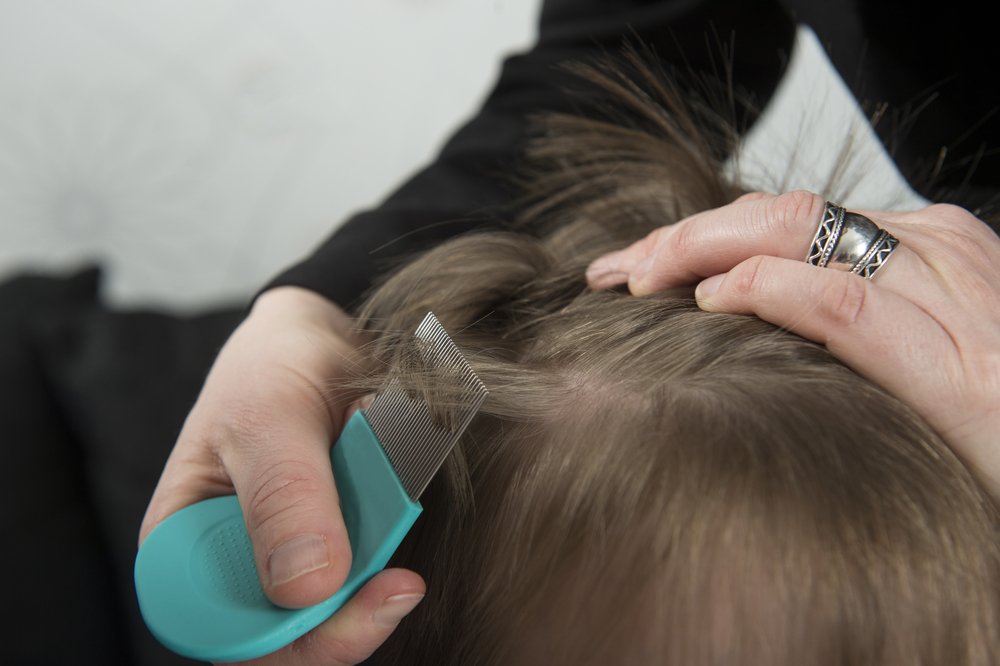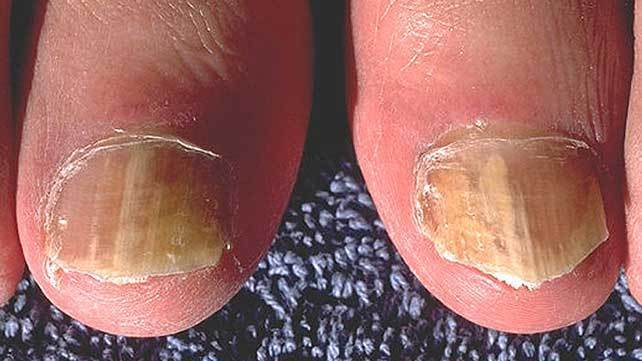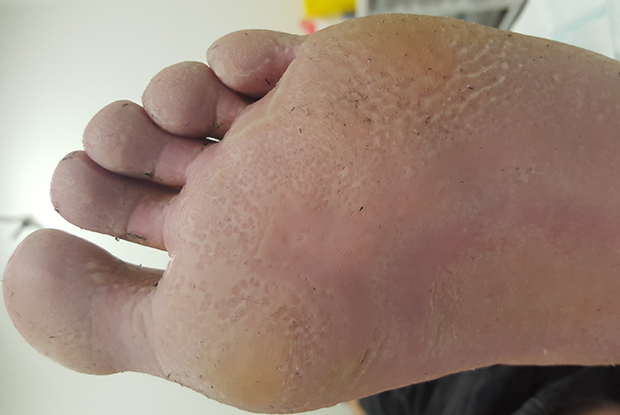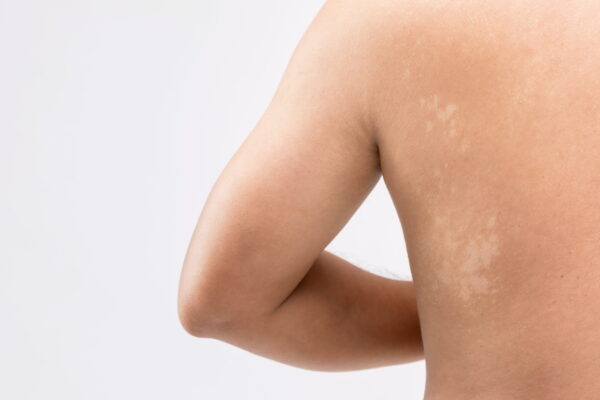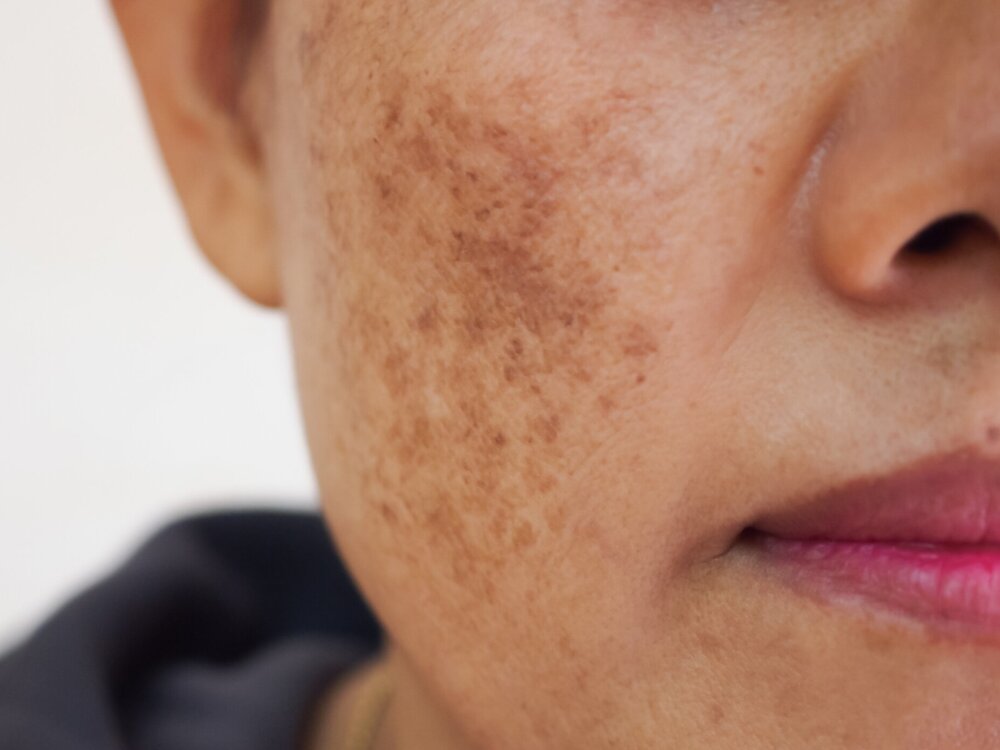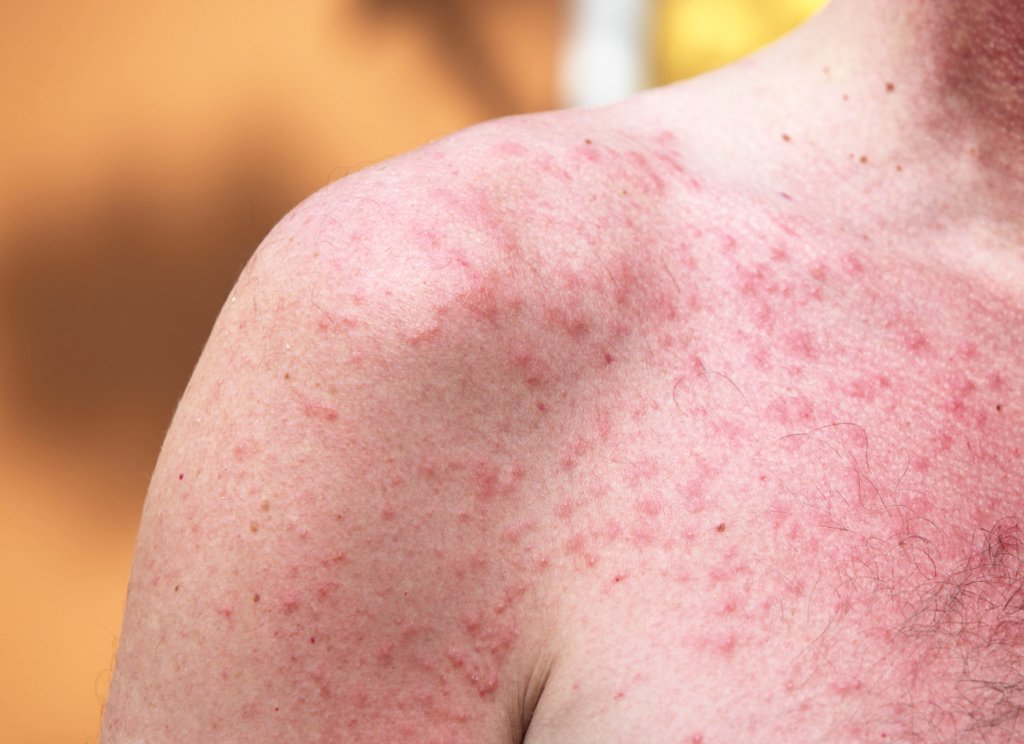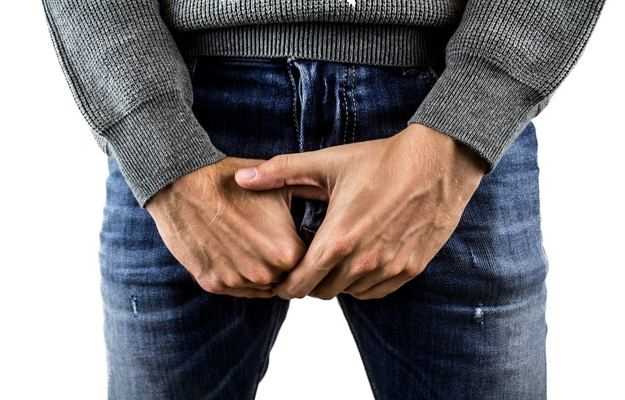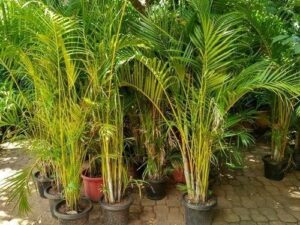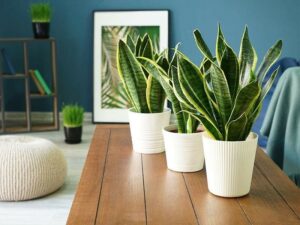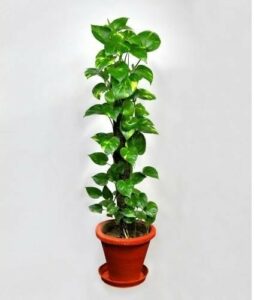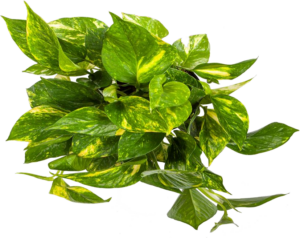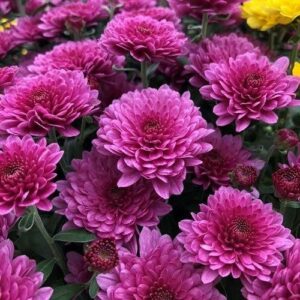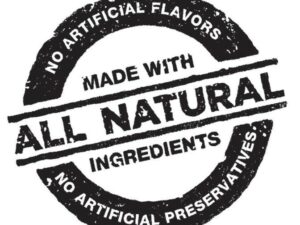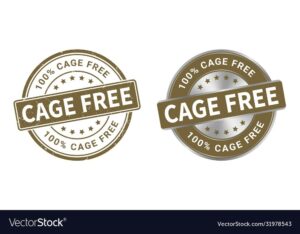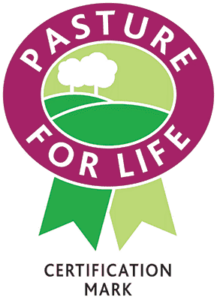Author Archives: Dr. Vaidya Karanvir Singh
PEDICULOSIS
- December 6, 2021
- Posted by Dr. Vaidya Karanvir Singh
- 0 Comment(s)
Pediculosis is an infestation of lice (blood-feeding)Ectoparacitic paracites of the order Phthiraptera. The crawlling stages of this insect feed on human blood, which might result in severe itching. Although pediculosis in humans may properly visit to lice infestation of any a part of the body, the term is typically used loosely to refer to pediculosis capitis. Head lice are usually located on the scalp, ears and neck .
CLASSIFICATION
Pediculosis is divided into the following types-
- Pediculosis capitis (Head lice infestation)
- Pediculosis corporis (Pediculosis vestimenti, Vagabond’s disease)
- Pediculosis pubis (Crabs)
CLINICAL PRESENTATION
Persons with pediculosis typically present with pruritus. Pruritus related to lice could be a delayed hypersensitivity reaction. It may take two to six weeks to develop after the primary exposure, with future episodes leading to pruritus within 1 to 2 days of exposure. Intense itching leads to scratching, infection and secondary cellulitis. In longstanding infestation, the skin may become whitish and hyperpigmented, particularly on the trunk. Pubic lice Can cause other sexually transmitted infections.
CAUSE- Head lice can easily be caused by active infestation from another person with head lice. In case of children they ‘re affected as they come in contact while playing or at school. Pediculosis capitis may also be caused by indirect infestation through: Brushes and combs.
SYMPTOMS
Common symptoms are-
- Itching. The quite common symptom of a lice infestation is itching on the neck,scalp and ears. This is often an hypersenstivity reaction to louse bites.
- Lice on scalp. Lice may be visible but are difficult to identify because they’re very small, avoid light and move very fast.
- Sores on the scalp, neck and shoulders. Due to scratching can lead to small, red bumps many time they get infected with bacteria.
DIAGNOSE
To diagnose infestation, the whole scalp should be combed thoroughly with a louse comb and also the teeth of the comb should be examined for the presence of living lice after every time the comb passes by hair. The use of a louse comb is the most easiest way to find living lice.
The most characteristic symptom of infestation is itching on the head which normally high in to 3 to 4 weeks . The bite of lice is very small and it can be rarely seen between the hairs. On the infested areas if do excessive scratching can cause blister, which may become dangerous.
RISK FACTOR
Anyone who comes in close contact of head-to-head contact with someone who already has head lice is at greatest risk.
– Head lice also acquired from contact like hats, scarves, and coats, towels, brushes, combs, hair bands, bad sheet, pillows, blankets that belong to an infected person.Lice infestation are not related to hygiene either personal and enviormental.
HERBS USED IN PEDICULOSIS
Reetha, Neem, Dhatura, Lashun.
AYURVEDIC TREATMENT
Ayurveda has super effective remedy to deal with head lice that works very well and give fast
- Application of the paste of bitter almonds is also good if you are unable to procure the Indian hemp.
- The ointment made of the powder of the bark of Celastrus paniculata (Malakanguni) with mustard oil is another good remedy for head lice.
- Apply the paste made of the finely powdered seeds of custard apple (Seetaa-phal) with water at bedtime and cover the head with a cloth. During applying this paste save the eyes.
- Soak the hair well with tobacco paste and canopy with a cloth for two to three hours. Then wash the hair with shampu.
- Phitkari is the non-herbal ayurvedic remedy for lice. phitkari is one of the most commomly used in head lice.
If the primary application of the louse killing agent is properly done, then destroys all the live bugs but does not kill all of the eggs . It is usual to determines small lice the day after treatment. It means that new ones have hatched out. That is why a second treatment, 7-10 days after the primary to destroy all the new lice that have hatched out since the first treatment and to kill them before they grow old enough to lay nits, is important.
PREVENTION
Using machines to wash and dry bedding, clothing, and other fabrics that a person with lice has used in the 2 days before treatment.
- Soaking combs, brushes, and other hair care items in hot water for 5–10 minutes.
- Vacuuming the furniture, floor, and other surfaces that will contain lice and their eggs.
- Avoiding sharing brushes or combs.
- Discouraging children from twiddling with one +-another’s hair, sharing pillowcases, or rubbing their heads together, especially if there has been a recent lice outbreak at their school.
SUMMARY
Lice are highly contagious, and anyone can get them.
Lice are not typically dangerous, but if it’s not taking seriously it will be dangerous.
A doctor or another health expert can help to guide treatments . An individual with a weak immune system, a history of significant skin reactions, or previous experience with treatment-resistant lice should counsult to a doctor before treating a lice infestation.
NAIL PSORIACIC
- December 6, 2021
- Posted by Dr. Vaidya Karanvir Singh
- 0 Comment(s)
DESCRIPTION
- Psoriasis is auto-immune chronic disease.
- Symptoms can vary from mild to severe.
- Nail psoriasis also known as psoriatic nail dystrophy. It is due to psoriasis involving the nail matrix resulting in specific and non-specific changes occur in the nail.
- Usually skin cells reproduce every 28–30 days.
- When people has plaque psoriasis their immune system is overactive and causes cells to reproduce every 3–4 days. As a result visible sections of skin are thick, red, and itchy.
SIGNS OF NAILS PSORIATIC
- pitting, which involves dents or holes forming in the nail
- white spots on the nail
- grooves across the nail
- a change in the nail’s shape or size
- thickening of the nail
- separation of the nail from the nail bed
- crumbling nails
- discoloration, in which the nail may become yellow or brown, for example
- blood under the nail
CLINICAL SIGNS OF NAIL BED INVOLVEMENT
- Oil-drop sign and salmon patch
- Onycholysis
- Subungual hyperkeratosis
- Splinter haemorrhages under the distal third of the nail plate
OTHER CLINICAL SIGNS OF PSORIATIC NAILS
- Paronychia due to periungual psoriasis
- Acrodermatitis continua of Hallopeau
- Twenty-nail dystrophy
WHAT ARE THE COMPLICATIONS OF NAIL PSORIASIS?
- Secondary onychomycosis in the damaged nail plate
- Psychosocial effects impacting social relationships and work-related activities
- Association with psoriatic arthritis and metabolic syndrome.
WHAT IS THE DIFFERENTIAL DIAGNOSIS FOR NAIL PSORIASIS?
- Onychomycosis
- Nail trauma
- Lichen planus of the nail
- Parakeratosis pustulosa
WHAT IS THE TREATMENT FOR NAIL PSORIASIS?
General measures
- Minimise nail trauma, keep affected nails short
- Treat associated onychomycosis first for at least three months
Specific measures
Topical treatments
- Topical steroids — betamethasone dipropionate, clobetasol propionate
- Topical calcipotriol
- Topical calcineurin inhibitors
Systemic treatments
- Methotrexate
- Acitretin
- Biological agents for psoriasis — infliximab, adalimumab, etanercept, ustekinumab
- Novel small molecules — apremilast, tofacitinib
Nonpharmacological treatments
- Phototherapy
- Lasers
- Photodynamic therapy
PREVENTION OF NAIL PSORIASIS
- Keep your nails trimmed short.
- Use a nail file to keep nail edges smooth.
- Wear gloves to clean and do other work with your hands.
- Moisturize your nails and cuticles every day and after they’ve been in contact with water.
- Wear comfortable shoes with enough room for your toes.
PITTED KEROTOLYSIS
- December 6, 2021
- Posted by Dr. Vaidya Karanvir Singh
- 0 Comment(s)
DESCRIPTION
- It is a bacterial infection of the skin
- It affects soles of the feet or the palms of the hands.
- More commonly occur in people with physical jobs that require to wear enclosed footwear for extended periods such as those working as farmers or soldiers,
- This bacteria more likely to develop the infection because bacteria thrive in dark, moist conditions and cause small depressions or pits in the top layer of the skin with bad smell.
CAUSES
- Kytococcus sedentarius, Corynebacterium and Actinomyces spices cause pitted kerotolysis.
- These bacteria thrive in moist or dark environments.
- Pitted keratolysis has an association with excessive sweating.
- Tight fitting socks or shoes creates perfect conditions for the bacteria to multiply.
Other risk factors for pitted keratolysis include:
- not drying the feet thoroughly after bathing
- not wearing absorbent socks
- sharing towels with others
Some occupation increase the risk of pitted keratolysis include:
- athletes
- farmers
- sailors and fishing workers
- industrial workerspeople who work in the military
Other risk factors that can make people more likely to develop pitted keratolysis include:
- hot, humid weather
- sweating a lot on the hands or feet
- having thickened skin on the palms or soles
- having diabetes
- being older
- having a compromised immune system
SIGNS AND SYMPTOMS
The most common locations for pitted keratolysis include:
- Pressure-bearing sites on the soles of the feet, especially the heels
- Non-pressure-bearing sites on the soles of the feet
- Palms of the hands.
WHO’S AT RISK?
- Pitted keratolysis occur in people of any race, age, and sex.
- It is more common in males’ mostly in athletes and military personnel tend to develop this condition most commonly.
Conditions that make people to develop pitted keratolysis include:
- Sweaty feet
- Hot or humid weather
- Unventilated footwear
SELF-CARE GUIDELINES
- Keep the feet as dry as possible is important.
Try the following:
- Wear absorbent cotton socks and change them frequently.
- Wash feet with antibacterial or antiseptic soap.
- Using hairdryer to dry feet thoroughly after washing them.
- Apply antiperspirant to the soles daily.
- Minimize the use of tight-fitting, occlusive footwear.
- Avoid wearing the same pair of shoes.
ALLOPATHIC TREATMENTS
- Antiperspirant containing aluminum chloride
- Antibiotic lotions such as clindamycin, erythromycin, or mupirocin
- Antifungal cream such as miconazole or clotrimazole
- Oral antibiotics such as erythromycin
- Injections of botulinum toxin in severe cases.
CAC TREATMENT FOR PITTED KEROTOLYSIS
- CAC DETOX PREMIUM POWDER – are herbo-mineral sachets which are purely Ayurvedic formulation. These sachets mainly detox the body and eliminate toxic substances and helps in proper metabolism of all the functions. This formulation act at the level of the nervous system and facilitate proper conduction of signal impulse from the nerves to the muscles. These sachets have anti-inflammatory, antioxidant, and anti-bacterial, anti-fungal, and immune-modulator. The ingredients present in it are moti pishti, parwal pishti, shukta pishti, Giloy satv, kamdudha ras, Jahar Mohra, akik pishti, gandhak rasayan, sutshekhar ras, etc. These ingredients balances all the three doshas (Vata, Pitta & Kapha) and helps in blood purification, reduces burning sensation, weakness, and hot flashes in ulcerative colitis patients. It reduces the level of high uric acid in the body. The powder is very beneficial in relieving discomfort, numbness, muscle ache, and reduces swelling of the pelvic region. This powder provides a cooling & calming effect on the mouth ulcers. It is very beneficial in reducing the swelling, redness, stiffness, and improves the movements of joints.
- CAC Skin care tablet – is herbo mineral and purely ayurvedic formulation. It help to maintain the texture of your skin depending on the type of skin you have. It contains various herbs like Haridra khand, Panchnimb churna, Khadir chahal, Chirayta, Mulethi, Chopchini, Gandhak, Ajmoda that work very effectively on all skin types. Skin care is a blood purifying tablet. It cools and detoxifies the blood, removes stagnant blood and dissolves obstructions in the blood flow that further increase blood circulation of the skin. It minimises the blemishes, lighten sun tan, delay ageing of skin and heal skin problems.
- CAC Twak Tailam – is the herbal oil and is purely Ayurvedic preparation. CAC Twak Tailam provides relief from various skin problems such as pimples, blemishes, scars, ulcers, wounds, skin rashes, dry patches, itching, skin irritation, reduces redness, etc. It is composed of natural herbs that pacifies all three doshas and provides healthy skin. This oil is made up of pure herbs such as yashtimadhu (Glycyrrhiza glabra), manjistha (Rubia cordifolia). Twak tailam supports skin health, helps in reducing uneven pigments, delays the process of ageing, improves complexion, and helps in deep detoxification, blood purification without any side effects. This oil moisturizes your skin, and makes your skin spotless and glowing naturally.
- CAC Panchatikta Ghrit Guggulu – It is a herbo-mineral ayurvedic formulation of CAC consist of herbs specifically designed to treat drying, inflammation, and deadening of tissue and skin, particularly of the rectum area. The main ingredient is Neem which is best for treatment of ailments of the blood and plasma, most effective against many skin diseases which is caused due to harmful toxins and vitiation of the blood. It has antiseptic and anti-inflammatory effects which makes it useful in treating piles, and fissures. In addition, this blend contains many ingredients which shows cleansing action on the liver and kidneys, which further helps to detox the skin and post-digestive functioning. The herbs added shows rejuvenating and soothing action on the circulatory and digestive systems. It is used to treat a variety of skin conditions including, but not limited to, rectal bleeding and inflammation.
- CAC Blood Purifier Syrup – it is 100% natural & safe prepared from various extracts of herbs. The herbs used for formulation of this syrup shows antioxidant, anti-inflammatory, anti-bacterial, anti-fungal, and immuno-modulator properties. It is best known for purifying the blood. It helps in eliminating the toxins from blood that cause acne and blemishes. It’s a perfect herbal remedy for skin diseases like acne vulgaris, boils, skin rashes, blemishes, urticaria, and nose bleeding.
PITYRIASIS VERSICOLOR
- December 6, 2021
- Posted by Dr. Vaidya Karanvir Singh
- 0 Comment(s)
OVERVIEW
Ptyriasis versicolor is a fungal infection that causes small, discoloured patches of skin.
It most often affects teens and young adults. The condition isn’t contagious. Pityriasis versicolor most frequently affects adults and is more common in men than in women. It can also affect all three stages of human.
It may disappear in the winter months and reappear each summer.
CAUSE
Pityriasis versicolor is a common superficial fungal infection caused by saprophytic, lipid-dependent yeasts from the Malassezia genus . Malassezia is a normal component of the skin flora; however, in pityriasis versicolor this fungus transforms from yeast cells into a pathogenic mycelial form. This may occur due to hot and humid weather, hyperhidrosis, the use of topical skin oils , a genetic predisposition , immunocompromised individuals , those receiving oral contraceptive therapy, and malnourished individuals .
Since Malassezia is lipid-dependent, it commonly presents in areas with greater sebum production. As such the upper body is frequently affected and pityriasis adolescents due to a higher sebum production.
SYMPTOMS
- Hypopigmentation
- Hyperpigmentation
- Mild erythema
- Macules
- Patches
- Thin plaques
- Fine scale
- Mild pruritus
Lesions are usually small; however, they frequently coalesce into larger patches.
DIAGNOSE
Your doctor can diagnose tinea versicolor by what the rash looks like.
Some investigation also help to detect the ptyriasis vrsicolor:-
- Wood lamp (black light) examination. In this examination doctor uses ultraviolet light, which may make the affected areas appear a fluorescent coppery orange color if they’re affected of tinea versicolor.
- Microscopy using potassium hydroxide (KOH). In this examination doctor removes cells from your skin, put them in potassium hydroxide, then looks under a microscope.
- Skin biopsy. The physcian takes a skin sample by scraping some skin from the affected area to look at under a microscope.
PREVENTION
It can be difficult to prevent a recurrence of this condition. There are few steps to prevent the infection. These include:
- avoiding excessive heat
- avoiding tanning or excessive sun exposure
- avoiding excessive sweating
DURATION
Pityriasis versicolor is a chronic condition. It responds well to treatment; however, recurrence is frequently observed and long-term prophylactic therapy is often required. This condition can be persistent if untreated; however, cases of spontaneous remission have been reported.
SIMILAR CONDITION
Some conditions with overlapping symptoms, such as vitiligo, are often mistaken for tinea versicolor. Vitiligo can differ from tinea versicolor in several ways, including:
- Vitiligo doesn’t affect your skin’s texture.
- Vitiligo usually appears on the mouth, fingers, wrist armpits, mouth, eyes, or groin.
- Vitiligo forms patches that are symmetrical patches.
It’s not known what causes this condition.
RISK FACTORS
The overgrowth can be triggered by a combination of enviromental and biological factors.These factors include the following:
- Oily skin
- Living in a hot, humid climate
- A weakened immune system
- Hormonal fluctuations
It is more common in warm climate. It may be environmental and seasonal. In this condition most of people’s skin look like pigmented and rashed. Sometimes it may cause mild symptoms like scaling, itching and irritated skin. It can be much more widespread if there is a problem with the immune system
DIFFERNTIAL DIAGNOSE
- Seborrheic dermatitis
- Pityriasis rosea
- Vitiligo
- Erythrasma
- Pityriasis alba
- Secondary syphilis
- Terra firma-forme dermatosis
HOME REMEDIES FOR PITYRIASIS VERSICOLOR
A sevral type of home remedies are recommended for tinea versicolor.
Aloevera has the ability to alkalize the body and also has soothing quality. It detoxify the body and inhibit the spread of fungus.
Garlic is also a skin irritant as can be turmeric and apple cider vinegar simultaneously used excessively.Tea tree oil apply on the affected area it can reduce patches over the skin.
Yoghurt has been recommended to be ingested and applied topically for the probiotic effect.
Neem ia known as natural detoxifier and considerd as the best treatment for skin disease.
Neem paste can applied externally.
Turmeric is very effective in treating ptyriasis versicolor as it helpful in reducing itching and pigmentation of skin.
It can be concluded that herbal remedies for ptyriasis versicolor are effective in the management of its reoccurance.
AYURVEDIC HERBS USED IN PITYARIASIS
Ayurvedic herbs people have used to treat psoriasis include:
- aloe vera
- black nightshade
- Boswellia, or frankincense
- garlic
- guggul
- jasmine flower paste
- neem
PANCHKARMA TREATMENT FOR PITYRIASIS
With the aim of better control on Pityariasis, Ayurveda also has a specific schedule comprised of various Panchkarma treatment aspects that includes purely herbal originated internal and external medications. Panchkarma treatment includes:-
- Consuming medicated ghee, according the Dosha type of the disease and the patient, for 7 to 10 days.
- Vaman & Virechan is done by inducing vomiting (Vamana) and purgation (Virechana) by herbal medicine.
- Shirodhara the above detoxification is followed by medicated Oil or Buttermilk dripping overhead (Shirodhara) .In which include usually oil, milk, buttermilk or water.
- Vasties (Medicated enemas)-these are being done for 8-10 days and internal medicines like herbal formulations, medicated ghee need to be consumed for at least 120 to 180 days.
A strict diet chart need to be followed during the entire treatment period and it is better to follow as vegetarian diet. Non Veg, Alcohols and salted thing have to be avoided. It is better to avoid junk food also. Ptyriasis vrsicolor must keep a state of mental calmness.
MELASMA
- December 6, 2021
- Posted by Dr. Vaidya Karanvir Singh
- 0 Comment(s)
DESCRIPTION
- Melasma is a skin condition which is characterized by brown, blue, gray patches or freckle-like spots on face.
- It also called mask of pregnancy or less common name for melasma is chloasma.
- Melasma happens because of overproduction of the cells that make skin color.
- It is common and harmless.
- Affected face, including the cheeks, upper lip, forehead, as well as the forearms.
- Melasma usually fades after a few months.
WHERE DOES MELASMA MOST COMMONLY OCCUR
- Nose, Cheeks, chin, upper lip and forehead.
- Sometimes occur in arms, neck and back.
- Melasma can affect any part of skin that is exposed to sunlight. That is why most people notice the symptoms worsen during the summer months.
HOW COMMON IS MELASMA?
- It is a very common skin disorder especially among pregnant women.
- 20 to 50% of pregnant women get it.
- Between 1 to 33% of the population get melasma and it happens more often during a woman’s reproductive years and rarely happens during puberty.
- It is usually occur between 20 and 40 years of age.
WHO IS AT RISK OF MELASMA?
- Fairer-skinned people are less likely to be affected by melasma than compare to people with darker brown skin or those who tan well.
- Women are more prone to get melasma than men.
- Pregnant women get melasma more than anyone else.
- People also at risk if taking oral contraceptives and hormones.
WHAT HAPPENS IN THE SKIN?
- Skin is made up of three layers:
- Outer layer is the epidermis,
- Middle is the dermis,
- Deepest layer is the sub cutis.
- Skin is a largest organ and makes up about one-seventh of body weight.
- Skin act as barricade. It protects bones, muscles, organs and everything else from the cold, from germs, sunshine, moisture, toxic substances, injury and more.
- It also helps to regulate body temperature, prevent hydration and feel sensations like the warmth of the stove.
- Epidermis contains cells called melanocytes that store and produce a dark color known as melanin.
- In light, heat, ultraviolet radiation or by hormonal stimulation the melanocytes produce more melanin and make skin darkens.
TYPES OF MELASMA
1. Epidermal – This type of melasma dark brown in color
- A well-defined border,
- Appears under black light
- Responds well to treatment.
2. Dermal – Dermal melasma are light brown or bluish in color,
- A blurry border,
- Appears no differently under black light
- Does not respond well to treatment.
3. Mixed Melasma – Mixed melasma is the most common type of melasma.
- It has both bluish and brown patches,
- Shows a mixed pattern under black light
- Shows response to treatment.
IS MELASMA CANCEROUS?
- Melasma is not cancerous,
- It is a sign of cancer or skin condition that turns into cancer.
- There are skin cancers that may mimic melasma.
IS MELASMA PERMANENT?
- Melasma is a typically chronic disorder. This means that it is long-lasting take 3 or more months.
- Some people have melasma for years or more their entire lives.
- Other people may have melasma for just a short time or during pregnancy.
CAUSES OF MELASMA
- Anti-seizure medications
- Contraceptive therapy
- Estrogen/Diethylstilbestrol
- Genetics
- Hypothyroidism
- LED Screens
- Pregnancy
- Hormones
- Cosmetics
- Phototoxic drugs
- Skin care products
- Soaps
- Tanning beds
DO CERTAIN FOODS AFFECT MELASMA?
- No foods or drinks are known to directly cause, magically cure or worsen melasma
- To keep skin healthy try healthy-skin diet of foods rich in Vitamin D:
- Almond milk
- Eggs
- Meat
- Milk
- Mushrooms
- Oily fish
- Orange juice
- Yogurt
HOW DO DERMATOLOGISTS TREAT MELASMA?
- Hydroquinone
- Tretinoin and corticosteroids
- Other topical medicines.
CAC TREATMENT FOR MELASMA
- Detox Premium Powder – Detox premium powder is a very effective ayurvedic medicine to cure blemishes as it purifies the whole body by removing excess toxins from the body. The powder is composed of shukta pishti, giloy satv, gandhak rasayan, moti pishti, akik pishti, shankh bhasma, etc. The ingredient reduces all the signs and symptoms associated with the blemishes.
Recommended Dosage – Take 1 sachet twice daily with normal water. - Skin Glow Kadha – Skin glow kadha is an Ayurvedic proprietary that gives the best result in the treatment of acne, blemishes, rashes, and other common skin problems. The decoction is composed of dalchini, giloy, tulsi, chirata, haldi, mahaguni, bahera, etc. The ingredients have anti-aging properties and act as natural astringent that provides freshness to the skin, helps in improving the skin texture, restores the skin balance and naturally improves the quality of the skin.
Recommended Dosage – Take 20 ml twice daily with an equal amount of water. - Blood Purifier Syrup – It is ayurvedic syrup that consists of various natural ingredients such as Khadir Chall (Acacia catechu), Manjistha (Rubia cordifolia), Neem (Azadirachta indica), Giloy (Tinospora cordifolia), Harad (Terminalia bellirica), Baheda (Terminalia chebula), Amla (Emblica officinalis), etc. As
the syrup purifies the blood by removing excess toxins it is very beneficial in maintaining proper circulation and improves the skin naturally.
Recommended Dosage – Take 2 teaspoonful twice daily. - Aloe Vera Gel – Aloe Vera herb is well known for its medicinal properties and has multiple benefits in case of skin problems. The gel is made up of pure extract of aloe vera that has a mixture of rose petals in it. The gel has anti-inflammatory, anti-oxidant, anti-fungal, anti-bacterial properties and also provides a
coolant effect to the skin.
Method of Application – Gently apply over the affected area of the skin. - Twak Tailam – Twak tailam is very effective for the skin as it deeply nourishes the tissues and improves the skin luster. The tailam is composed of yashtimadhu (Glycyrrhiza glabra), manjistha (Rubia cordifolia), etc. The tailam supports skin health, helps in reducing uneven pigments, improves complexion, and helps in deep detoxification and blood purification without any side effects.
Method of Application – Apply over the affected area of the skin. - Skin care tablet – Skin care tablet is a pure ayurvedic formulation. It help to maintain the texture of your skin depending on the type of skin you have. It contains various herbs like Haridra khand, Panchnimb churna, Khadir chahal, Chirayta, Mulethi, Chopchini, Gandhak, Ajmoda that work very effectively on all
skin types. Skin care is a blood purifying tablet. It cools and detoxifies the blood, increase blood circulation of the skin. It minimizes the blemishes, lighten sun tan, delay ageing of skin and heal skin problems.
Recommended Dosage – Take 1 tablet twice daily. - Panchatikta ghrita guggulu – This tablet contains pure herbal ingredients such as Nimba(Azadirachta indica), Patola(Cucumis acutangulus), Guduchi(Tinospora cordifolia), Vasa(Adhatoda vasica), etc. these herbs shows Antioxidant, Anti-rheumatic, Anti-inflammatory, Analgesic, antipruritic, neuro-protective
properties. This tablet is effective in Indigestion, blood purification, blemishes, scars, asthma, and gout.
Recommended Dosage – Take 1 tablet twice daily.
POLYMORPHIC LIGHT ERUPTION
- December 6, 2021
- Posted by Dr. Vaidya Karanvir Singh
- 0 Comment(s)
DESCRIPTION
- Polymorphic light eruption also called polymorphous light eruption.
- It is a common skin rash triggered by exposure to sunlight or ultraviolet light.
- The rash usually appears red, tiny bumps or slightly raised patches of skin.
- Polymorphous light eruption mostly occur during spring season and early summer when people exposure more to sunlight.
- Repeat occurrence are less common but the rash recurs after the first incident.
- Polymorphous light eruption usually goes away on its own without leave any scar within 10 – 12 days.
- People with severe or persistent rashes need immediate treatment.
WHO GETS POLYMORPHIC LIGHT ERUPTION?
- Polymorphic light eruption generally affects adult females sometimes affects children and males in 25% of cases.
- It is particularly common in places where sun exposure is uncommon.
- It is less common in Australasia.
- It has also been relatively common at higher altitudes compared to sea level.
- It can affect all skin photo type more often diagnosed in white skin than other skin of color.
- Some people experience polymorphic light eruption during phototherapy which is used to treat skin conditions such as psoriasis and dermatitis.
CLINICAL FEARTURE OF POLYMORPHIC LIGHT ERUPTION
- Erythema
- Erythematous plaques
- Dry, red patches or plaques
- Vesicles
- Pinpoint papules
- Lichenoid plaques
- Targetoid lesions (bull’s-eye appearance)
- Prurigo confined to exposed areas
- Itch without visible signs
HOW IS POLYMORPHOUS LIGHT ERUPTION TREATED?
- In some cases, polymorphic light eruption is resolves on its own with no treatment in more severe cases medications required such as:
- Topical steroids
- Topical tacrolimus
- Antihistamines
- Oral corticosteroids
- Hydroxychloroquine
RISK FACTORS
anyone can develop polymorphous light eruption. Some factors are associated with an increased risk of the condition include:
- Being female
- Experiencing the first episode during the teenage years
- Having light skin and living in northern regions
- Having a family history of the condition.
CAC TREATMENT FOR POLYMORPHOUS LIGHT ERUPTIOON
- CAC DETOX PREMIUM POWDER – these are herbo-mineral sachets which are purely Ayurvedic formulation. These sachets mainly detox the body and eliminate toxic substances and helps in proper metabolism of all the functions. This formulation act at the level of the nervous system and facilitate proper conduction of signal impulse from the nerves to the muscles. These sachets have anti-inflammatory, antioxidant, and anti-bacterial, anti-fungal, and immune-modulator. The ingredients present in it are moti pishti, parwal pishti, shukta pishti, Giloy satv, kamdudha ras, Jahar Mohra, akik pishti, gandhak rasayan, sutshekhar ras, etc. These ingredients balances all the three doshas (Vata, Pitta & Kapha) and helps in blood purification, reduces burning sensation, weakness, and hot flashes in ulcerative colitis patients. It reduces the level of high uric acid in the body. The powder is very beneficial in relieving discomfort, numbness, muscle ache, and reduces swelling of the pelvic region. This powder provides a cooling & calming effect on the mouth ulcers. It is very beneficial in reducing the swelling, redness, stiffness, and improves the movements of joints.
DOSAGE – Take 1 sachet twice daily with normal water. - ALOE-VERA GEL – it is 100% natural and safe containing herbal extracts. These ingredients show antioxidant, anti-inflammatory, & moisturizing properties. This herbal gel gives good results in Acne or Pimples, Dry Skin, Hyper-Pigmentation All skin diseases. 100% natural & safe product. This product is formulated under the guidance of MD Ayurveda expert. Provides natural glow to the skin and free from preservatives & chemicals etc.
- SKIN CARE TABLET – it is herbo mineral and purely ayurvedic formulation. It help to maintain the texture of your skin depending on the type of skin you have. It contains various herbs like Haridra khand, Panchnimb churna, Khadir chahal, Chirayta, Mulethi, Chopchini, Gandhak, Ajmoda that work very effectively on all skin types. Skin care is a blood purifying tablet. It cools and detoxifies the blood, removes stagnant blood and dissolves obstructions in the blood flow that further increase blood circulation of the skin. It minimises the blemishes, lighten sun tan, delay ageing of skin and heal skin problems.
DOSAGE – Take 1-2 tablets twice daily. - TWAK TAILAM – Twak tailam is the herbal oil and is purely Ayurvedic preparation. CAC Twak Tailam provides relief from various skin problems such as pimples, blemishes, scars, ulcers, wounds, skin rashes, dry patches, itching, skin irritation, reduces redness, etc. It is composed of natural herbs that pacifies all three doshas and provides healthy skin. This oil is made up of pure herbs such as yashtimadhu (Glycyrrhiza glabra), manjistha (Rubia cordifolia). Twak tailam supports skin health, helps in reducing uneven pigments, delays the process of ageing, improves complexion, and helps in deep detoxification, blood purification without any side effects. This oil moisturizes your skin, and makes your skin spotless and glowing naturally.
METHOD OF APPLICATION – Apply over the affected area of the skin. - PANCHTIKTA GHRIT GUGGULU – It is a herbo-mineral ayurvedic formulation of CAC consist of herbs specifically designed to treat drying, inflammation, and deadening of tissue and skin, particularly of the rectum area. The main ingredient is Neem which is best for treatment of ailments of the blood and plasma, most effective against many skin diseases which is caused due to harmful toxins and vitiation of the blood. It has antiseptic and anti-inflammatory effects which makes it useful in treating piles, and fissures. In addition, this blend contains many ingredients which shows cleansing action on the liver and kidneys, which further helps to detox the skin and post-digestive functioning. The herbs added shows rejuvenating and soothing action on the circulatory and digestive systems. It is used to treat a variety of skin conditions including, but not limited to, rectal bleeding and inflammation.
DOSAGE – 1 tablet twice a day.
DIET PLAN FOR EPIDIDYMITIS
- December 6, 2021
- Posted by Dr. Vaidya Karanvir Singh
- 0 Comment(s)
SUNDAY | |
| BREAKFAST (8:00 8:30AM) | Ragi dosa – 3 + 2 tsp. methi chutney + 1 glass milk(toned)/1 cup tea |
| MID-MEAL (11:00-11:30AM) | 1 wedge of water melon |
| LUNCH (2:00-2:30PM) | 1 cup brown rice+2 roti + 1/2 cup cabbage dal + 1/2 cup capsicum sabji + 1 glass buttermilk |
| EVENING (4:00-4:30PM) | 1 glass almond(4-5 powdered) milk(toned) + 2-3 oats biscuits |
| DINNER (8:00-8:30PM) | 2 methi paratha/ 1 cup parboiled rice + 1/2 cup ridge gourd sabji + 1 glass buttermilk |
MONDAY | |
| BREAKFAST (8:00-8:30AM) | Dalia upma-1.5 cup with vegetables (potato, onion, tomato, green peas, carrot) +1 glass milk(toned)/1 cup tea |
| MID-MEAL (11:00-11:30AM) | 1 glass mixed berry juice (blueberry+ black berry) with 1 tsp. grated ginger |
| LUNCH (2:00-2:30PM) | 4 roti+100gm fish(tuna/sardine/salmon/mackerel with little olive oil)-grilled/stewed+1/2 cup rajmah curry |
| EVENING (4:00-4:30PM) | 1/2 cup of beetroot, carrot and broccoli salad with 1 tsp. olive oil+1 cup green tea |
| DINNER (8:00-8:30PM) | 3 multi grain roti (jowar, bajra, wheat)/ 1 cup parboiled rice + 1/2 cup ivy gourd sabji + 1 glass buttermilk |
TUESDAY | |
| BREAKFAST (8:00-8:30AM) | Oats-1/2 cup + milk(toned)-150ml |
| MID-MEAL (11:00-11:30AM) | 1 glass grape fruit juice with 1 tsp. grated ginger |
| LUNCH (2:00-2:30PM) | 1 cup brown rice+2 jowar roti+1/2 cup tomato dal+1/2 cup cluster beans curry+1 glass buttermilk |
| EVENING (4:00-4:30PM) | 1 small fist of peanuts,raisins,almonds,walnuts+1 cup green tea |
| DINNER (8:00-8:30PM) | 2 palak paratha/ 1 cup parboiled rice+1/2 cup bhindi sabji +1 glass buttermilk |
WEDNESDAY | |
| BREAKFAST (8:00-8:30AM) | Idly-4+sambhar-1/2 cup + green chutney-2 tsp+1 glass milk(toned)/1 cup tea |
| MID-MEAL (11:00-11:30AM) | 1 cup of pomegranate seeds |
| LUNCH (2:00-2:30PM) | 4 bajra roti + 1/2 cup lauki dal + 1/2 cup green peas and paneer sabji+1 glass buttermilk |
| EVENING (4:00-4:30PM) | 1/2 cup of stewed tuna and leek salad+1 cup green tea |
| DINNER (8:00-8:30PM) | 3 multigrain roti (bajra, oats, ragi)/ 1 cup parboiled rice+1/2 cup snake gourd sabji + 1 glass buttermilk |
THURSDAY | |
| Breakfast (8:00-8:30AM) | Wheat dosa-3 + 2 tsp. pudina chutney + 1 glass milk(toned)/1 cup tea |
| Mid-Meal (11:00-11:30AM) | 1 glass cranbery juice with 1 tsp. of grated ginger |
| Lunch (2:00-2:30PM) | 1 cup brown rice + 2 bajra roti + 1/2 cup methi dal + 1/2 cup French beans sabji + 1 glass buttermilk |
| Evening (4:00-4:30PM) | 1 glass walnut milk(toned) + 2-3 multigrain biscuits |
| Dinner (8:00-8:30PM) | 2 beetroot and green peas paratha/ 1 cup parboiled rice+1/2 cup bitter gourd sabji+1 glass buttermilk |
FRIDAY | |
| BREAKFAST (8:00-8:30AM) | Roasted oats upma-1.5 cup with vegetables(potato, onion, tomato, green peas, carrot)+1 glass milk(toned)/1 cup tea |
| MID-MEAL (11:00-11:30AM) | 100gm musk melon |
| LUNCH (2:00-2:30PM) | 1 cup white rice+2 roti+100gm fish(tuna/sardine/salmon/mackerel) curry+1/2 cup soya chunk and aloo sabji |
| EVENING (4:00-4:30PM) | 1 glass avocado (75gm), milkshake (milk-150ml-toned). |
| DINNER (8:00-8:30PM) | 3 multi grain roti (corn flour, wheat, oats)/ 1 cup parboiled rice+1/2 cup lauki sabji+1 glass buttermilk |
Saturday | |
| BREAKFAST (8:00-8:30AM) | Paratha-2 (aloo/methi/mooli/gobhi)+2 tsp. green chutney+1 glass milk(toned)/1 cup tea |
| MID-MEAL (11:00-11:30AM) | 6-7 strawberries |
| LUNCH (2:00-2:30PM) | 4 roti+1/2 cup palak dal + 1/2 cup bitter gourd sabji + 1 glass buttermilk |
| EVENING (4:00-4:30PM) | 1/2 cup of roasted sweet potato salad with 1 tsp. olive oil |
| DINNER (8:00-8:30PM) | 2 mushroom and garlic paratha/ 1 cup parboiled rice + 1/2 cup cauliflower sabji + 1 glass buttermilk |
FOOD ITEMS TO LIMIT
Decrease Tran’s fats, deep-fried foods, margarine, fast foods, and artificial sweeteners.
Decrease sugar, sweets, white flour products, and processed foods.
Avoid tobacco, alcohol, caffeine, and soda pop.
DO’S AND DON’TS
Eating more sources of omega–3 fat like fatty fish (salmon, mackerel, herring, and sardines), canola oil, fish oil, flaxseeds, pumpkin seeds and walnuts.
Eating foods that contains high fiber, including plenty of fruits, vegetables, beans, whole grains, and nuts
Take organic produce such as meat and milk
Limiting saturated fat by eating mostly plant–based foods
choosing low fat dairy products.
5 Plants to Control Air Pollution
- December 4, 2021
- Posted by Dr. Vaidya Karanvir Singh
- 0 Comment(s)
“LET’S OPT FOR THESE PLANTS ON THE OCCASION OF
NATIONAL POLLUTION CONTROL DAY-2-Dec-2021”
Trees and plants are as important to humans as air and water, but human settlements are built by cutting them down. Man is paying a heavy price for this. He has to live with pollution. Countless diseases are being embraced, but now man has realized his mistake. By planting new trees, he is now paying off the debt of nature. Along with this, efforts are also being made to reduce the pollution of cities by increasing greenery in all the cities of the world.
For this, it is necessary to first know where the level of pollution is and then trees should be planted there accordingly. At the same time, it is also important to understand that trees improve the quality of the air, and not completely clean the air. To make the air clean, it is necessary to minimize carbon emissions.
Plants act as lungs for the atmosphere. They release oxygen and purify the air by absorbing carbon dioxide from the atmosphere. The leaves of plants also absorb dangerous elements like sulphur dioxide and nitrogen dioxide and make the air clean. Not only this, many types of polluted
elements stick on the velvety twigs and leaves of the plants and get washed away when water falls.
Pollution is more on roads than in residential areas. Therefore, trees with more dense and broad leaves should be planted here. The wider and denser the leaves, the more pollution they will be able to absorb. A research suggests that plants with small fibrous leave also plays an important role in controlling PM. For example, trees like cedar and cypress act as good air purifiers. Research has found that the leaves of these trees have the highest ability to absorb the toxic elements of PM 2.5.
If you want to find a concrete solution to the problem of air pollution, then these 5 plants should be planted in your own house.
1. Areca Palm
It is also called living room plant.
It absorbs toxic gases like formaldehyde, carbon dioxide and carbon monoxide from the air and gives clean oxygen.
For oxygen in the house, plant 4 Erica palm plants up to shoulder height and clean its leaves daily.
It needs to be kept in the sun once in three to four months.
2. Mother-In-Law’s Tongue Plant
It is also known as snake plant and bedroom plant.
Its most surprising thing is that it converts carbon dioxide into oxygen even at night.
To provide clean air for a man, plant 6 plants of waist height or height up to three feet inside the house.
3. Money Plant
Many people think about this plant that planting it in the house brings money, but this is not directly true.
Although this is indirectly true, because this plant cleans chemical toxins from the air and releases fresh air into the atmosphere, which keeps our health better, we get less sick and do not need to go to the doctor, which saves money.
Perhaps for this reason people would have named it Money Plant.
4. Golden Pothos
The name of this plant is also very big in the list of air purifier plants.
This plant; Grows in the light of bulb or tube light.
This plant can survive even in very humid environment.
This plant plays an important role in eliminating carbon monoxide and carbon dioxide gas
If you plant 3 plants of three feet height of Golden Pothos in the bedroom, then it will keep the environment of the entire bedroom pure.
5.Chrysanthemum
This plant is not only known for its beautiful flowers but is also the most effective against indoor pollution.
It prevents five types of air pollution formaldehyde, benzene, trichloroethylene, xylene and ammonia.
Apart from the above mentioned plants, there are some other plants which play a very important role in reducing pollution.
These are: Bamboo Palm, Dracaena reflexa, Chinese evergreen, Peace Lilies, English Ivy, Boston fern, Dwarf Date Palm, Spider Plant and Weeping Fig.
So if you are looking for a way to get rid of air pollution and are spending a lot of money on air purifiers then just install the above mentioned plants in your house and get sustainable solution from air pollution at less cost.
National Pollution Control Day – 2nd Dec 2021
- December 4, 2021
- Posted by Dr. Vaidya Karanvir Singh
- 0 Comment(s)
Man is the best creation of nature. As long as he does not interfere with the work of nature, his life goes on smoothly and naturally. Due to the progress of science, the interest of man in industrial development has increased so much that he has almost never lost his harmony with nature. Scientists are of the opinion that there is no kind of filth in nature. His changed form does not harm the living world in any way.
This day also teaches us somewhere how horrific our carelessness can take about nature and how important it is for us to keep pollution under control.
On this day, many people raise slogans by writing slogans or quotes on the banner. The reason for celebrating this day is to give an important message to today’s youth.
Do you know why we celebrate National Pollution Control Day?
National Pollution Control Day is celebrated in the memory of those who lost their lives in the Bhopal Gas Tragedy. It is celebrated every year on 2 December in India to honor and remember those dead. The Bhopal gas tragedy occurred in the year 1984 on the intervening night of 2nd and 3rd December due to leakage of toxic chemical known as methyl isocyanate (MIC) along with other chemicals from the chemical plant of Union Carbide located in the city.
According to the report, more than 500,000 people (who died immediately around 2259) died due to leakage of toxic gas from the MIC. Later, it was announced by the Madhya Pradesh government that around 3,787 people had died related to the gas tragedy.
Around 8,000-10,000 people died in the next 72 hours, while the gas tragedy later led to the death of about 25,000 people due to diseases.
It has been recognized as the biggest industrial pollution disaster in history all over the world, for which serious preventive measures are needed to stay away from such type of disaster in future.
What is the Motto of celebrating it?
- One of the major factors in celebrating National Pollution Control Day every year is the management and control of industrial disaster as well as prevention of water, air and soil pollution (caused by industrial processes or manual negligence).
- Many laws were announced by the government to seriously control and prevent pollution all over the
- National Pollution Control Day is celebrated every year on 2nd December to make people and most of the industries aware to pay a lot of attention towards the need of Pollution Control Acts.
- National Pollution Control Board All good and bad works rules and laws are checked by National Pollution Control Board (NPCB) or Central Pollution Control Board (CPCB) which is the government body for prevention of pollution in
- It always checks whether the environment friendly technologies are being used properly by all the industries or
- Natural resources like water, air, land or forests are getting affected fast by various types of pollution which is very important to protect them immediately by implementing the rules and regulations in the right
What are the control measures?
- Urban Wastewater Treatment and Reuse Project Scientific treatment of solid waste and its
- Reducing the production of waste sewage treatment facility Reuse of waste and energy generation from waste.
- Bio-medical Waste Treatment Facility Electronic Waste Treatment Facility Water Supply Project Resource Recovery Project Energy Saving Project Hazardous Waste Management in Urban Areas Projects on Clean Development
- Along with policy, proper implementation of rules and all preventive measures of pollution, many other efforts have been made by the state government to prevent
- Industries have to first follow all the rules and regulations implemented by the authority to reduce
What are the Reasons of Pollution and its effects?
- The reason for pollution in today’s industrial age, the number of motor vehicles, railways and factories have increased
- The more industries grow, the more heat they will Smoke emits a lot of carbon monoxide which is injurious to health.
- It has been estimated that in a journey of 960 km, a motor-vehicle uses as much oxygen as humans need for a
- Airplanes, oil refining, ceramics mills, leather, paper, rubber factories, require fuel. The smoke generated by the burning of this fuel causes pollution.
- This pollution does not remain constant in one place, but due to the flow of air, it affects the whole world at a rapid pace. Densely populated areas are more affected by
- Pollution spreads in the air and there is a lack of The reason for the increase of pollution Tokyo is the most polluted city in the world. Here oxygen cylinders are kept for the police at different places so that they can use them when needed.
- In the event of smoke and fog, a bandage has to be made on the mouth to filter the Even on this there remains an excess of diseases of the eyes, nose and throat. A soldier who handled traffic in London for four hours filled his lungs with as much poison as if he had smoked 105 cigarettes.
- The problem of population growth is also working behind the problem of Due to this population growth, the need to expand the villages, towns and metros is being felt. As a result, settlements are being established there by cutting the forest.
- Due to the lack of trees and vegetation, an imbalance has arisen in the natural action of The life-saving material that nature collects is being neglected. The healthy environment of nature has become defective.
- This is called the problem of environment or pollution. The environment is getting polluted due to the abundance.
- Noise pollution spreads due to the noise of vehicles and machines, due to which there is a fear of deafness in the ears.
- Human beings are becoming victims of many types of physical and mental diseases.
LET’S TRY TO PREVENT AND CONTROL IT
- Control required until humans harmonize with Until then his industrial progress is in vain. This progress needs to be kept under control.
- The machine should not rule us, we should rule the machine.
- We should stay away from such industrial development, which hinders our comfortable life.
- Let us not be deprived of the benefits of forests, mountains, water bodies and rivers.
- Along with the cities, the villages also remained prosperous because in many respects the cities depend on the.
- Along with the urban culture, the rural culture should also be flourished.
- Solution To avoid the problem of pollution, it is necessary that factories producing toxic gas, chemicals and sewage should be established in open places far away from the places of residence, so that the citizens get natural dose (oxygen, vitality).
- The drains that take out the sewage of the cities should be buried under the ground so that they do not pollute the environment.
- Understanding the importance of Van Mahotsav e. various gardens should be developed.
- There should be regular pollution checkups.
- Try to use Eco-friendly products.
- Plant trees on the sides of the roads.
- Plant more trees in your garden and indoors.
- The meaning of industrial progress and progress is that human beings remain happy, healthy and prosperous.
- For this it is necessary that more and more opportunities should be given to nature to do its work naturally.
WHAT DOES THE ORGANIC FOOD LABELS REALLY MEAN?
- December 4, 2021
- Posted by Dr. Vaidya Karanvir Singh
- 0 Comment(s)
We may find many different food labels that contain details on how food has been processed or grown. And how significant are buying natural and organic foods when it comes to healthy eating. Some terms are helpful and others are misleading. So, let’s have a look at few of these terms so as to see what they actually mean.
CERTIFIED LABELS
- NATURAL FOOD LABLES
- ORGANIC FOOD LABLES
- CAGE-FREE FOOD LABLES
- GRASS-FED FOOD LABLES
- FREE RANGE FOOD LABLES
- PASTURE-RAISED FOOD LABLES
- LOCALLY GROWN FOOD LABLES
ORGANIC FOOD LABLES
- This label indicates that a product has been grown by a sustainable farming process.
- Foods may only be marked as ‘organic’ if at least 95% of their agricultural ingredients are organic.
- In non-organic foods, any ingredients which meet organic standards can be listed as ‘organic’.
- USDA’s National Organic Program regulates labeling requirements for Organic claims on food products.
- Products that contain at least 70 % organic ingredients and are produced without synthetic methods are labeled “made with organic ingredients”.
- Organic foods must be produced without the use of most conventional pesticides, sewage sludge, synthetic fertilizers, irradiation, or genetic engineering.
- These foods are also produced using methods that promote the conservation of our natural resources.
- Organic meat, poultry, eggs and dairy products come from animals that are raised without the use of antibiotics or growth hormones.
- Organic crops must be grown in safe soil, have no modifications and must remain separate from conventionally grown crops.
- In the United States (US) there are 3 levels of organic claims:
- 100 % Organic- Products that contains 100 percent organic ingredients (excluding salt and water, which are considered natural) and a USDA Organic seal.
- 95 % Organic- products that contains a minimum of 95 % organic ingredients (excluding salt and water) and a USDA Organic seal.
- “Made with Organic” ingredients- Products contains at least 70 percent of ingredients are certified organic. The Organic seal of USDA can’t be used but “made with organic ingredients” as it would be pictured or specified on its packaging.
NATURAL FOOD LABLES
- The term “natural” broadly means that nothing artificial such as least processed, free of synthetic coloring, dyes, flavorings and preservatives.
- High fructose corn syrup and genetically modified organisms (GMO’s) may be labeled as “Natural”.
- Natural is largely unregulated by the USDA for most foods except egg, meat and poultry products.
- Foods containing eggs, meat or poultry must be minimally processed and never received antibiotics or growth-promoting hormones in order to be labeled “natural”.
CAGE-FREE FOOD LABLES
- The term cage-free inform that the animals were not kept battery cages and instead allowed move freely over a large area of open land.
- They are still in an enclosed facility, but with unlimited access to food and fresh water.
- This health claim does not mean that animals were free to roam in pastures or that they had access to the outdoors. Many cage-free claims are not certified, making it a misleading label.
GRASS-FED FOOD LABLES
- If an animal is grass- fed and grass-finished then their feed was composed entirely of grass, legumes, and green vegetation up until the animal was slaughtered.
- However, this label does not address the use of antibiotics, growth hormones, or pesticides.
- USDA defines “grass fed” as it applies to labeling but does not regulate it in any way.
- So when shopping for meat, you need to make sure you are getting 100% Organic, Grass-Fed meat.
- Grass-fed beef is leaner and has been shown to have healthier omega-3 fatty acids.
FREE RANGE FOOD LABLES
- There are many different food labels that contain information about how food was grown or processed.
- USDA has avowed this term for animals that were raised in a sheltered facility with limitless access to food, water, and access to the outdoors.
- It does not signalize that the animal went outside in its lifetime, only that there was a door to the outside.
- The term free range does not specify the outdoor conditions.
LOCALY GROWN FOOD LABLES
- Generally local food means food that was grown close to home.
- Many locally grown products are sold directly from the farm to the consumer through farm stands, farm markets and farmers markets.
- People buy locally for freshness of the food, financial benefits and less transportation of the food.
- This could be in your own garden, your local community, your state, or your region.
- Small local farmers mostly use organic methods, but sometimes cannot afford to become certified organic.
PASTURE-RAISED FOOD LABLES
- A “pasture raised” claim on meat, poultry, dairy, or egg labels means that the animals were raised spend more time outdoors than indoors, not continually confined indoors.
- USDA has not developed a definition for this term yet; however; many farmers use it to distinguish themselves from “free range” farms.
- This differs from free-range and the most norm label to look for when selecting eggs and chicken.
- Generally these animals are not given antibiotics or growth hormone, but you need to ask to be hundred percent sure.
POINT TO BE NOTED
- Visit a farmers market and talk to the farmers.
- Find out how they produce the fruits and vegetables they sell.
- In Summary, it is crucial to look at claims on the foods that you buy to be sure you are getting what you want.
- Be aware of the differences in labels so that you know what you are buying, particularly if it costs you more than conventional foods.


